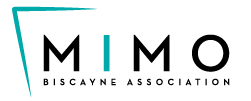LEGION PARK
By John Bachay
France has its French Foreign Legion, the Roman Empire had its famous Roman Legion and the Miami MiMo District has Legion Park — 37 acres of green space with one historic structure, in the middle of the historic district boundaries. How did this come to be? I’m glad you asked this question….
The American Legion was chartered by the U.S. Congress in 1919 to provide benefits and compensation to WWI veterans and their families. The Miami American Legion was founded in the same year and named Harvey W. Seeds Post #29 after the first soldier from Dade County to be killed in the war.
Miami’s Post #29 had its original home at various city locations but with membership increasing it had outgrown its home and in 1934 it acquired a 45-acre site on Biscayne Boulevard between NE 64 and NE 66 Streets. During the 1940s and 1950s, local and visiting Legionnaires formed the core congregation of the area’s Lutheran churches as well as an important client base for businesses along Biscayne Boulevard. In 1966, due to a declining and aging membership and increasing maintenance costs, American Legion officials sold 37 acres of the land to the City of Miami, which turned it into Legion Park. The Legion used the proceeds of the sale to build a new clubhouse on the remaining eight acres.
The Tee House, the building that currently serves as a community center for Legion Park, is the last survivor of Lemon City’s twentieth century coral stone waterfront houses. In 1897, S.K. Brown, from Washington, D.C., acquired six bayfront acres from William Pent, the original homesteader, and built a two-story wooden home adjacent to the Bay. He also bought additional land from neighbors and planted pineapples and tropical fruit trees.
In 1910, William Ogden, a Baltimore millionaire, bought the Brown property and hired architect George Pfeiffer to remodel and expand the house. He added a two-story wing, three ground floor public rooms and five bedrooms on the second floor. Pfeiffer also converted the ground floor of the Brown house into a dining room and added more bedrooms upstairs. Finally, he covered the exterior of the resulting “Tee” shaped house with coral stone. Ogden also bought additional land, expanding the total area of the property to 45 acres. He was a very colorful personality: When asked what he did for a living, he said, “I drink.”
Edward Ballard acquired the property upon Ogden’s death in 1922. During Prohibition, it operated as a speakeasy and unlicensed casino. Still later, the Tee House became a nightclub, a restaurant and even served a stint as a brothel.
When Post #29 obtained the 45-acre site in 1934, the original Brown house and portions of the additions that Pfeiffer had designed were demolished. Today, only parts of the remodeled Tee House remain.
Currently there are development plans afoot for the area lying just outside the southern boundaries of Legion Park. This includes the clubhouse and land still owned by the American Legion as well as additional lots situated just south of Legion land and east of Biscayne Boulevard. Once these plans are presented to the public, the MiMo Biscayne Association will review and make recommendations on this important pending development.
Sources: Robert Flanders – “American Legion Harvey W. Seeds Post #29, 85 Years of History.”
Antolin Carbonell – Various articles
Photo courtesy of Debby Stander
